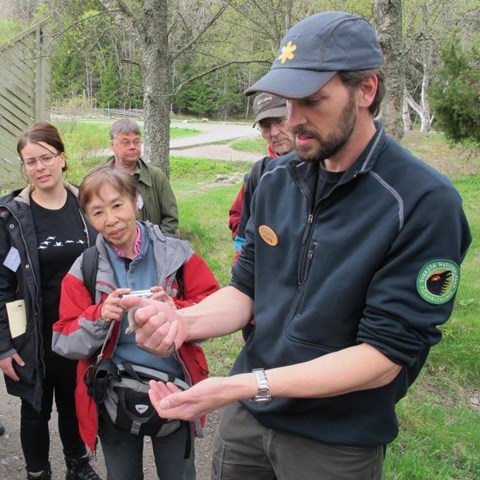Contact
Swedish Centre for Nature Interpretation (SCNI)
Department of Urban and Rural Development, Swedish University of Agricultural Sciences (SLU)
scni@slu.se
www.scni.se

The aim of nature interpretation (“naturvägledning” in Swedish) is to help visitors develop a personal relationship with nature and the cultural landscape. In English, the term heritage interpretation is more commonly used.
According to a definition by the Nordic Council of Ministers (1990), nature interpretation is the mediation of feelings and knowledge of nature and the cultural landscape.
A more modern way to look at nature or heritage interpretation, is that the interpreter should facilitate for the participants to develop personal relationship to nature and the cultural landscape.
The basic aim of nature interpretation in the Nordic countries is to contribute to increased knowledge and understanding of the relationship between people, nature and our cultural landscapes. To promote care of nature, commitment to the natural and cultural heritage and environmental issues.
The goals of heritage interpretation include elements of learning and positive experiences in nature, as well as stimulating the participants' own reflections. Heritage interpretation has a message which aims to evoke feelings in the participant's for the heritage. Then it is easier to relate to the heritage and also to reflect on how own attitudes and/or behaviours might have an affect on it.
Heritage interpretation is more about communication than information. By heritage, we mean both natural and cultural elements in the landscape.
Swedish Centre for Nature Interpretation (SCNI)
Department of Urban and Rural Development, Swedish University of Agricultural Sciences (SLU)
scni@slu.se
www.scni.se